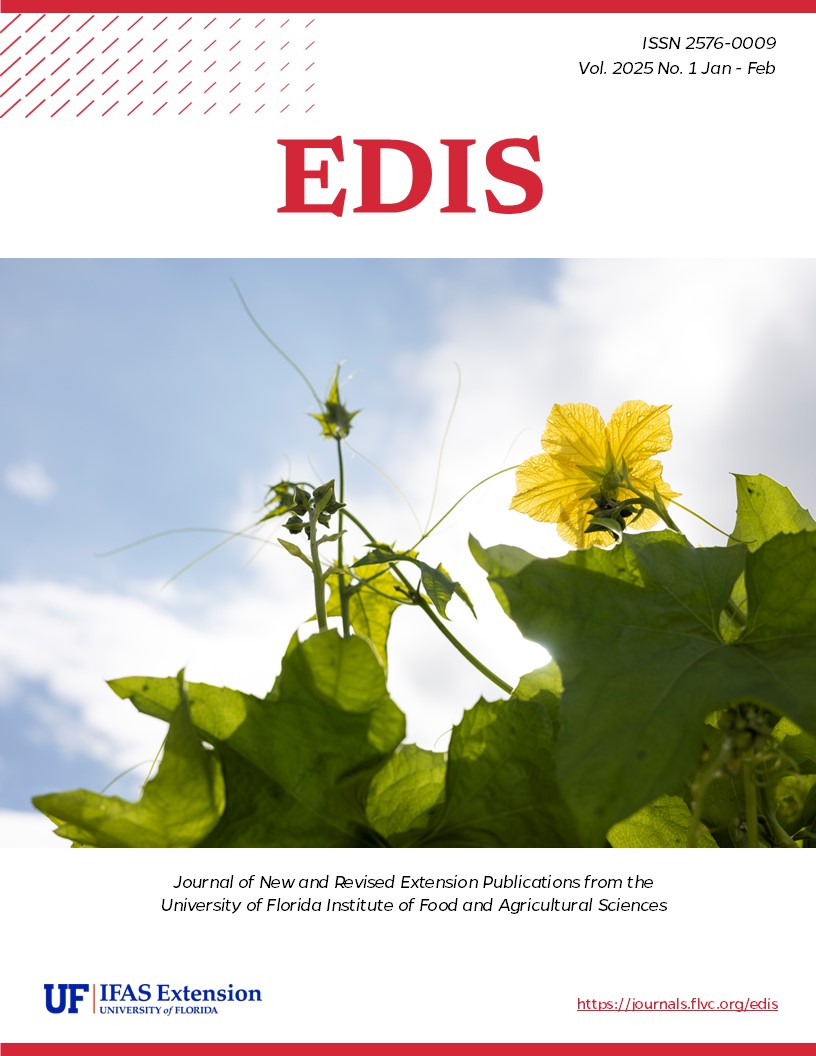Abstract
Esta publicación destaca los potenciales beneficios de los huertos urbanos tanto para los vecindarios cercanos como para la comunidad urbana en general, así como para las comunidades periféricas y visitantes de una ciudad. Los planificadores urbanos, residentes y miembros de la comunidad encontrarán muy útil esta información tanto para planificar nuevos huertos como para mantener los ya establecidos.
References
Azunre, G. A., O. Amponsah, C. Peprah, S. A. Takyi, and I. Braimah. 2019. “A Review of the Role of Urban Agriculture in the Sustainable City Discourse.” Cities 93:104–119. https://doi.org/10.1016/j.cities.2019.04.006
Camps-Calvet, M., J. Langemeyer, L. Calvet-Mir, and E. Gómez-Baggethun. 2016. “Ecosystem Services Provided by Urban Gardens in Barcelona, Spain: Insights for Policy and Planning.” Environmental Science & Policy 62:14–23. https://doi.org/10.1016/j.envsci.2016.01.007
Chan, J., B. Dubois, and K. G. Tidball. 2015. “Refuges of Local Resilience: Community Gardens in Post-Sandy New York City.” Urban Forestry & Urban Greening 14 (3): 625–635. https://doi.org/10.1016/j.ufug.2015.06.005
Clarke, M., M. Davidson, M. Egerer, E. Anderson, and N. Fouch. 2018. “The Underutilized Role of Community Gardens in Improving Cities' Adaptation to Climate Change: A Review.” People, Place and Policy 12(3). https://doi.org/10.3351/ppp.2019.3396732665
Garcia, M. T., S. M. Ribeiro, A. C. C. G. Germani, and C. M. Bógus. 2018. “The Impact of Urban Gardens on Adequate and Healthy Food: A Systematic Review.” Public Health Nutrition 21 (2): 416–425. https://doi.org/10.1017/S1368980017002944
House, E., C. O'Connor, K. Wolf, J. Israel, and T. Reynolds. 2016. “Outside Our Doors: The Benefits of Cities Where People and Nature Thrive.” Seattle, WA: The Nature Conservancy, Washington State Chapter, 30 pp.
Hsu, A., G. Sheriff, T. Chakraborty, and D. Manya. 2021. “Disproportionate Exposure to Urban Heat Island Intensity across Major US Cities.” Nature Communications 12 (1): 1–11. https://doi.org/10.1038/s41467-021-22799-5
Kleerekoper, L., M. Van Esch, and T. B. Salcedo. 2012. “How to Make a City Climate-Proof, Addressing the Urban Heat Island Effect.” Resources, Conservation and Recycling 64:30–38. https://doi.org/10.1016/j.resconrec.2011.06.004
Karpyn, A. E., D. Riser, T. Tracy, R. Wang, and Y. E. Shen. 2019. “The Changing Landscape of Food Deserts.” UNSCN Nutrition 44:46.
Lal, R. 2020. “Home Gardening and Urban Agriculture for Advancing Food and Nutritional Security in Response to the COVID-19 Pandemic.” Food security 12 (4): 871–876. https://doi.org/10.1007/s12571-020-01058-3
Lawson, L. J. 2005. City Bountiful: A Century of Community Gardening in America. Berkeley and Los Angeles, CA: University of California Press.
Lin, B. B., M. H. Egerer, J. Kingsley, P. Marsh, L. Diekmann, and A. Ossola. 2021. “COVID‐19 Gardening Could Herald a Greener, Healthier Future.” Frontiers in Ecology and the Environment 19 (9): 491. https://doi.org/10.1002/fee.2416
Louv, R. 2005. Last Child in the Woods: Saving Our Children from Nature-deficit Disorder. Chapel Hill, NC: Algonquin Books of Chapel Hill.
Luo, S., J. Xie, and K. Furuya. 2021. “‘We need such a space”: Residents’ Motives for Visiting Urban Green Spaces during the COVID-19 Pandemic.” Sustainability 13 (12): 6806. https://doi.org/10.3390/su13126806
Malaviya, P., R. Sharma, and P. K. Sharma. 2019. Rain gardens as stormwater management tool. Sustainable Green Technologies for Environmental Management 141–166. https://doi.org/10.1007/978-981-13-2772-8_7
Majewska, A. A., and S. Altizer. 2020. “Planting Gardens to Support Insect Pollinators.” Conservation Biology 34 (1): 15–25. https://doi.org/10.1111/cobi.13271
National Oceanic and Atmospheric Administration (NOAA). (2023, April 4). NOAA, communities to map heat inequities in 14 states, 1 International City. https://www.noaa.gov/news-release/noaa-communities-to-map-heat-inequities-in-14-states-1-international-city. Accessed July 25, 2023.
Okvat, H., and A. Zauta. 2011. “Community Gardening: A Parsimonious Path to Individual, Community, and Environmental Resilience.” American Journal of Community Psychology 47 (3-4): 374–387. https://doi.org/10.1007/s10464-010-9404-z
Opitz, I., R. Berges, A. Piorr, and T. Krikser. 2016. “Contributing to Food Security in Urban Areas: Differences between Urban Agriculture and Peri-Urban Agriculture in the Global North.” Agriculture and Human Values 33 (2): 341–358. https://doi.org/10.1007/s10460-015-9610-2
Mancebo, F. 2018. “Gardening the City: Addressing Sustainability and Adapting to Global Warming through Urban Agriculture.” Environments 5 (3): 38. https://doi.org/10.3390/environments5030038
Richards, P. J., C. Farrell, M. Tom, N. S. Williams, and T. D. Fletcher. 2015. “Vegetable Raingardens Can Produce Food and Reduce Stormwater Runoff.” Urban Forestry & Urban Greening, 14 (3): 646–654. https://doi.org/10.1016/j.ufug.2015.06.007
Rizwan, A. M., L. Y. Dennis, and L. I. U. Chunho. 2008. “A Review on the Generation, Determination, and Mitigation of Urban Heat Island.” Journal of Environmental Sciences 20 (1): 120–128. https://doi.org/10.1016/S1001-0742(08)60019-4
Tasker, P., C. Reid, A. D. Young, C. G. Threlfall, and T. Latty. 2020. “If you plant it, they will come: quantifying attractiveness of exotic plants for winter-active flower visitors in community gardens.” Urban Ecosystems 23 (2): 345–354. https://doi.org/10.1007/s11252-019-00914-1
Valle, G. R. 2021. “The Past in the Present: What Our Ancestors Taught Us about Surviving Pandemics.” Food ethics 6 (2): 1–12. https://doi.org/10.1007/s41055-021-00088-7
United States Environmental Protection Agency (EPA). 2023. Heat Islands and Equity. https://www.epa.gov/heatislands/heat-islands-and-equity. Accessed July 24, 2024.
US EPA. 2015. “Green Infrastructure and Ground Water Impacts.” Accessed July 24, 2024. https://www.epa.gov/green-infrastructure/green-infrastructure-and-ground-water-impacts
World Bank. 2013. “Urban Agriculture: Findings from Four City Case Studies.” Urban development series knowledge papers No. 18 (Washington DC).
Wright, A. 2021. “Interactive web tool maps food deserts, provides key data.” USDA. Retrieved December 4, 2022, from https://www.usda.gov/media/blog/2011/05/03/interactive-web-tool-maps-food-deserts-provides-key-data

This work is licensed under a Creative Commons Attribution-NonCommercial-NoDerivatives 4.0 International License.
Copyright (c) 2025 UF/IFAS

